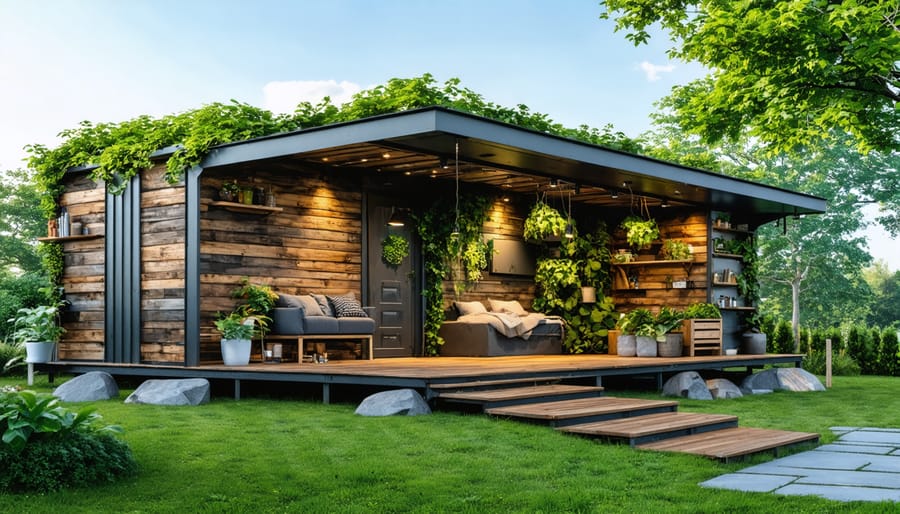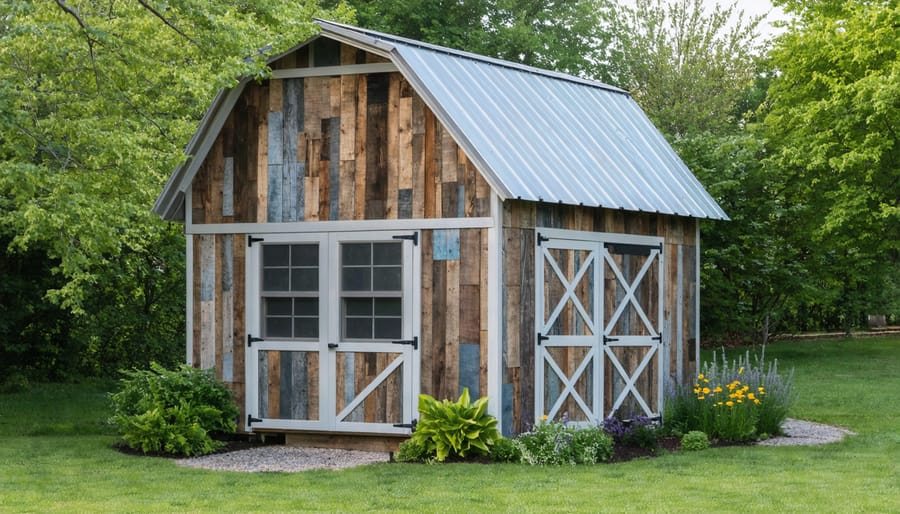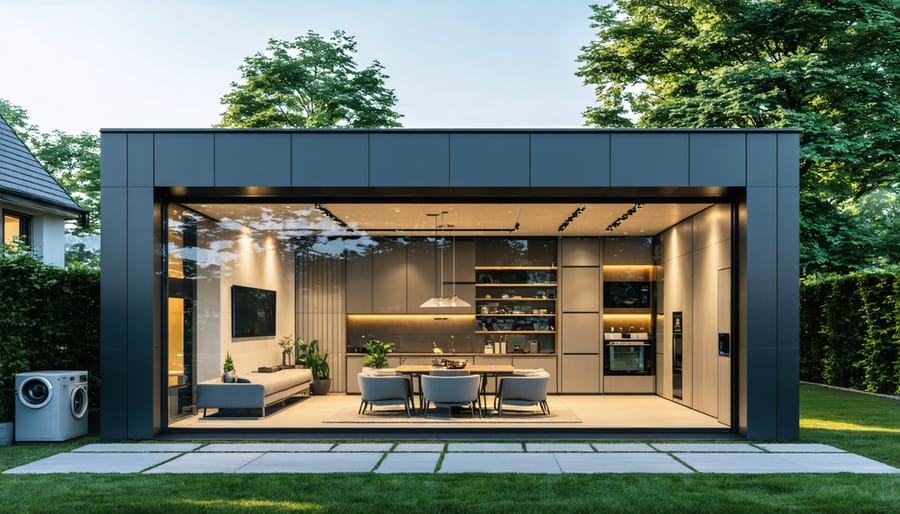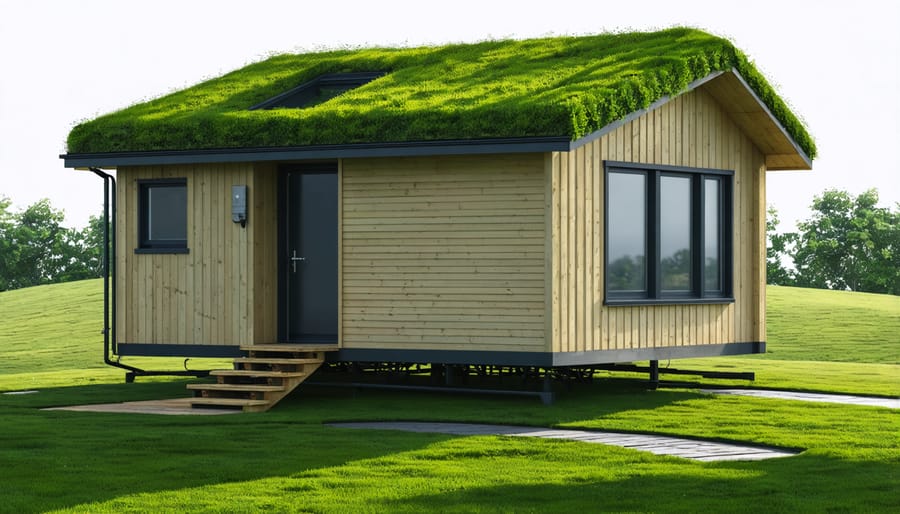Build a Shed That’s Kind to Your Wallet and the Planet

Transform your living space into a beacon of sustainability through thoughtfully designed eco-friendly storage solutions and innovative green architecture. Modern eco-friendly design seamlessly blends environmental responsibility with stunning aesthetics, creating spaces that nurture both people and planet. From recycled building materials to energy-efficient systems, today’s sustainable architecture proves that responsible design doesn’t mean compromising on style or functionality.
By incorporating natural light, renewable materials, and smart energy management, eco-friendly designs reduce environmental impact while cutting long-term operational costs. These thoughtful approaches to construction and renovation aren’t just trendy – they’re reshaping how we think about our built environment and its relationship with nature. Whether you’re planning a major renovation or simply looking to make your space more sustainable, eco-friendly design offers practical solutions that benefit both your wallet and the world around us.
Sustainable Materials That Last
Reclaimed and Certified Wood Options
When choosing wood for your eco-friendly design project, reclaimed timber offers both character and environmental benefits. These materials, often sourced from old barns, warehouses, and other structures, give new life to existing resources while reducing the demand for fresh lumber. Each piece tells a story through its unique patina and grain patterns, adding charm to your project.
For new wood, look for certification marks from organizations like the Forest Stewardship Council (FSC) or the Sustainable Forestry Initiative (SFI). These certifications ensure your lumber comes from responsibly managed forests where trees are replanted and ecosystems are protected. Many local suppliers now stock certified wood options at competitive prices.
Popular sustainable wood species include bamboo, which grows rapidly and regenerates naturally, and locally sourced hardwoods that reduce transportation emissions. Cedar and cypress offer natural resistance to decay and insects without chemical treatments, making them excellent choices for outdoor projects.
Remember to ask your supplier about the wood’s origin and handling methods. Many can provide documentation of their sustainable practices and help you choose the best option for your specific needs.

Recycled Metal and Composite Materials
Recycled metal and composite materials are revolutionizing eco-friendly shed design, offering durability and sustainability in one package. Metal sheets made from recycled aluminum and steel provide excellent weather resistance while reducing landfill waste. These materials require minimal maintenance and can last for decades, making them a smart long-term investment for environmentally conscious homeowners.
Innovative composite materials, created from a blend of recycled plastics and wood fibers, offer the classic look of wooden structures without the environmental impact of harvesting new timber. These materials resist rot, insects, and weather damage, reducing the need for chemical treatments and preservatives. Many homeowners appreciate that composite materials don’t require regular painting or staining, saving both time and resources over the years.
When selecting recycled materials, look for products with high recycled content percentages and local sourcing to minimize transportation impact. Many manufacturers now offer warranties on their recycled products, demonstrating confidence in their longevity. Consider mixing materials, such as using recycled metal roofing with composite wall panels, to maximize both functionality and eco-friendliness.
Energy-Efficient Design Features
Natural Lighting Solutions
Maximizing natural light in your eco-friendly shed isn’t just about brightness – it’s a smart way to reduce energy consumption and create a more pleasant space. By implementing thoughtful natural lighting solutions, you can significantly cut down on artificial lighting needs while enhancing your shed’s functionality.
Strategic placement of windows is crucial for optimal daylight. Consider installing windows on multiple walls, particularly the south-facing side, to capture maximum sunlight throughout the day. Double-pane windows not only let in light but also provide excellent insulation, preventing heat loss during colder months.
Skylights are another game-changer for shed lighting. These overhead windows flood your space with natural light from above, creating an even distribution of brightness throughout the day. Modern skylight designs often include UV protection and can be opened for additional ventilation when needed.
For areas where direct window installation isn’t possible, consider installing solar tubes or light pipes. These innovative solutions capture sunlight from the roof and channel it down through reflective tubing, bringing natural light to otherwise dark corners of your shed.
Remember to position your workbenches and storage areas to take advantage of this natural illumination. This thoughtful arrangement ensures you’ll have plenty of light for tasks while minimizing the need for artificial lighting.

Ventilation and Temperature Control
Smart ventilation and temperature control are essential elements of eco-friendly design, helping you maintain comfort while minimizing energy consumption. Natural ventilation strategies, such as cross-ventilation through strategically placed windows and vents, allow fresh air to flow freely through your space. This reduces the need for mechanical cooling systems and improves indoor air quality.
Consider incorporating roof overhangs and awnings to provide shade during summer months while allowing beneficial winter sunlight to enter. These passive solar design features can significantly reduce heating and cooling costs throughout the year. Installing operable skylights not only brings in natural light but also creates a chimney effect that helps hot air escape during warmer months.
For temperature regulation, proper insulation is key. Use sustainable materials like recycled denim or sheep’s wool insulation in walls and ceilings to maintain consistent indoor temperatures. Adding thermal mass elements, such as concrete floors or stone walls, can help absorb heat during the day and release it at night, naturally balancing temperature fluctuations.
Green roofs and living walls serve dual purposes – they provide natural insulation while creating habitats for local wildlife. These features can reduce indoor temperatures by up to 5 degrees Celsius in summer and help retain warmth during winter months. Remember to position trees and shrubs strategically around your building to create natural windbreaks and shade, further enhancing your passive cooling system.
Water-Wise Features

Rain Collection Systems
Rain collection systems are an ingenious way to reduce your environmental footprint while saving money on water bills. By installing gutters and rain barrels, you can harvest rainwater for various purposes around your property, from watering gardens to cleaning outdoor equipment. A well-designed system typically includes seamless gutters that direct water flow into collection barrels positioned at downspout locations.
Standard rain barrels can store between 50-100 gallons of water, and you can connect multiple barrels for increased capacity. Consider installing a first-flush diverter, which filters out initial roof runoff containing debris and contaminants, ensuring cleaner water collection. For aesthetic appeal, choose barrels that complement your shed’s design, or disguise them with creative landscaping.
To maximize efficiency, position your rain barrels on elevated platforms, allowing gravity to create water pressure for hose attachment. Don’t forget to include overflow valves and mosquito screens for safety. During winter months in colder climates, remember to disconnect and drain your system to prevent freeze damage.
Green Roof Options
Transform your storage shed into a living ecosystem with innovative green roof systems that bring multiple benefits to your property. These living roofs create a natural habitat for local wildlife while providing excellent insulation for your shed. A layer of vegetation, growing medium, and waterproof membrane work together to regulate temperature, reduce energy costs, and manage stormwater runoff.
Installing a green roof can be as simple as adding drought-resistant sedums or as elaborate as creating a mini-garden with native plants. The system helps extend your roof’s lifespan by protecting it from UV rays and extreme weather conditions. Plus, it adds a beautiful, natural aesthetic that blends seamlessly with your landscape.
For DIY enthusiasts, modular green roof kits are available, making installation more manageable. However, it’s essential to ensure your shed’s structure can support the additional weight. Consider consulting a professional to assess your shed’s load-bearing capacity and recommend appropriate plant species for your climate zone. With proper planning and maintenance, a green roof can transform your storage shed into an eco-friendly focal point of your backyard.
Long-Term Benefits and Savings
Investing in eco-friendly design isn’t just good for the planet – it’s also a smart financial decision that pays dividends over time. Homeowners who implement sustainable features typically see significant reductions in their utility bills within the first year. Energy-efficient windows, proper insulation, and solar panels can cut heating and cooling costs by 20-30% annually.
Water conservation features like rainwater harvesting systems and low-flow fixtures can reduce water bills by up to 40%, while drought-resistant landscaping minimizes irrigation needs and maintenance costs. These sustainable choices also increase property value – studies show that eco-friendly homes command 4-10% higher resale values compared to conventional properties.
Beyond immediate cost savings, eco-friendly designs often incorporate more durable materials that require less frequent replacement. Sustainable materials like bamboo flooring and recycled metal roofing can last decades longer than traditional alternatives, reducing long-term maintenance expenses.
There’s also the environmental impact to consider. A typical eco-friendly home can reduce carbon emissions by 2-3 tons annually – equivalent to planting 100 trees. Many homeowners report that their sustainable choices have inspired neighbors to make similar upgrades, creating a ripple effect of positive environmental change in their communities.
The initial investment in eco-friendly features typically pays for itself within 5-7 years, making it an excellent long-term strategy for both your wallet and the planet.
By embracing eco-friendly shed design, you’re not just creating a storage solution – you’re making a positive impact on the environment while enhancing your property’s value. The combination of sustainable materials, energy-efficient features, and water conservation methods we’ve explored demonstrates that going green doesn’t mean compromising on functionality or style.
Remember that every sustainable choice counts, from selecting recycled materials to incorporating natural lighting and rainwater harvesting systems. These choices not only reduce your environmental footprint but also lead to long-term cost savings through decreased energy consumption and maintenance needs.
As more homeowners recognize the importance of sustainable living, eco-friendly sheds are becoming increasingly popular and accessible. Whether you’re planning a new shed project or looking to upgrade an existing structure, implementing even a few of these green design principles can make a significant difference.
Take the first step toward sustainable storage by incorporating these eco-friendly features into your shed design. Your environmentally conscious choice today will benefit both your household and our planet for years to come.

